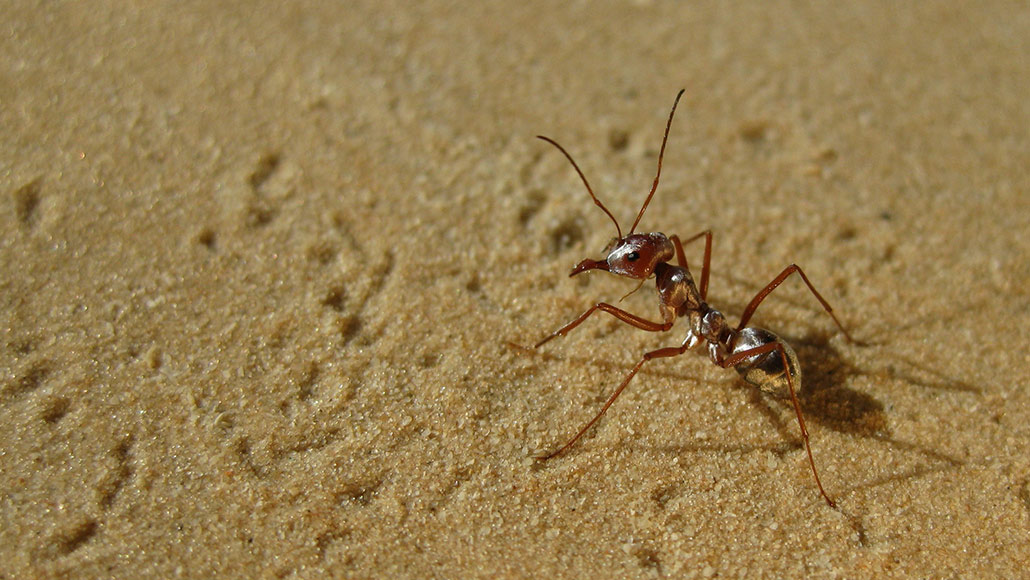Saharan silver ants are the world’s fastest despite relatively short legs
At top speeds, these scavengers basically gallop, with all six legs in the air at once

The world’s fastest ant doesn’t have the longest legs, but new speed tests in the Sahara show how it compensates.
Matthias Wittlinger
The world’s newly crowned fastest known ants don’t look as if they’ve got the legs to be champs.
Saharan silver ants (Cataglyphis bombycina) have merely runner-up proportions, with legs about 18 percent shorter than those of a related desert ant (C. fortis). Yet adjusting for body length, video shows silver ants rushing along about twice as fast as their leggier cousins.
Sarah Pfeffer of the University of Ulm in Germany and colleagues took a high-speed video camera to Tunisia to get that video of the shorter ants in their hot and sandy home. At an oasis on the northern edge of the great dunes, the researchers searched for glimpses of silver.
Tiny silver hairs coat the ants, reflecting some of the sun’s glare and shedding heat (SN: 6/22/15). When Pfeffer, an applied neuroethologist, digs out a nest to study, several thousand ants seething in her transport box look “like quicksilver,” she says.
That silvery protection comes in handy because the ants stay in their nests at night and scavenge for food in the furnace of midday. “The sun really burns down,” Pfeffer says. Surface sand temperatures can soar over 60° Celsius (about 140° Fahrenheit). Even at ant heights, the air is still brutal.

Silver ants, however, get two bonuses for foraging in the worst of the heat. It’s a great time to find fresh carcasses of creatures that the sun fried but that heat-averse scavengers haven’t found yet. Also, ant-hungry predators often take shelter from the heat, so silver ants are less likely to become lunch themselves.
To see how those shortish legs can run through hell, Pfeffer set up an outdoor open-topped metal runway dusted with sand. She then offered a free lunch for ants. “They love mealworms,” she says. As ants rushed along the runway, Pfeffer got high-speed film of the step details. The shorter legs compensate by packing more strides into each second, up to 47 for the silver ants running at top speed versus 36 for their taller relatives, the team reports October 16 in the Journal of Experimental Biology.
Pfeffer clocked speeds as high as 855 millimeters per second. That’s 108 times a silver ant’s body length in a second.
The camera picked up six legs moving in two groups of triplets, like alternating tripods. At higher speeds, an ant gets airborne for just an instant with no legs touching the ground. In horses, that’s galloping. Pfeffer describes it as gliding, since the ants zoom forward smoothly instead of galumphing.
That glide is fast enough to crown the dune dwellers as the fastest known ant so far. Among arthropods in general, the fastest in terms of body lengths per second are tiny Paratarsotomus macropalpis mites in southern California (SN: 6/12/14). Young mites can zoom across concrete around three times as fast as the ants.






